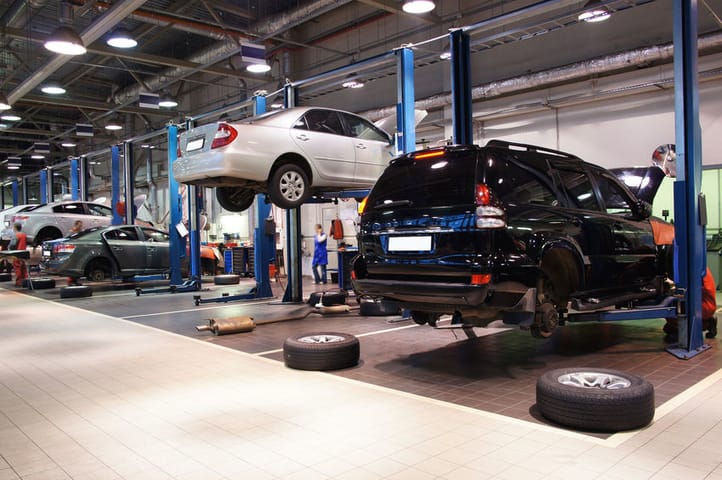All Categories
Featured
Your automobile's brakes are among the most vital components in ensuring your safety and the safety and security of others when traveling. Routine brake assessments are crucial to keeping ideal braking performance and staying clear of expensive repair services. Whether you're an experienced automobile owner or a brand-new driver, understanding brake assessment standards can aid you remain aggressive about maintenance and guarantee your car is constantly roadworthy.
- Why Brake Inspections Matter. The even more you drive, the extra friction your brake pads endure, eventually leading to minimized stopping performance. Without correct inspection, it's difficult to assess when your brakes may be in requirement of repair service.
A well-maintained brake system makes sure fast, receptive stopping power, especially in emergency situations. It also assists extend the life of your vehicle, as overlooking brake upkeep can lead to extra serious, costly problems later on.
- Signs You Need a Brake Evaluation. While it's crucial to have your brakes checked occasionally, specific indications may indicate that they need interest. Maintain an eye (and ear) out for these warning signals:
Squeaking or Grinding Noises: Uncommon noises, particularly a piercing screech or grinding noise, typically indicate that your brake pads are worn down. Resonance or Pulsation: If you really feel vibrations or a pulsing experience when pushing the brake pedal, maybe an indication of warped rotors or uneven brake pad wear. Minimized Brake Responsiveness: If your brakes feel much less receptive or you have to push the pedal harder to decrease, it might indicate air in the brake lines or low brake fluid. Drawing to One Side: If your automobile pulls to one side when braking, it could imply irregular brake pad wear or a brake fluid leakage. Control Panel Caution Lights: Some vehicles have brake-related warning lights that show problems like reduced brake liquid or worn brake elements. If you notice any of these signs and symptoms, it's vital to have a professional mechanic do a brake assessment as soon as possible.

- What Occurs During a Brake Inspection? During a brake inspection, an auto mechanic will examine numerous crucial elements of the stopping system to guarantee every little thing remains in working order. Here's what you can expect during the procedure:
Brake Pads and Shoes: The technician will certainly evaluate the density of the brake pads or footwear. If they're also thin, they'll require to be replaced. Brake Rotors: Rotors are the discs that the brake pads press versus to reduce your automobile down. They'll be inspected for any type of indications of wear, scoring, or warping. Brake Fluid: Reduced or contaminated brake liquid can hinder braking performance. The professional will inspect the fluid level and high quality and top it up or purge it if required. Brake Lines and Tubes: Brake lines bring fluid from the master cyndrical tube to the brakes. The auto mechanic will inspect for any leaks, fractures, or damage to guarantee correct fluid circulation. Brake Calipers and Wheel Cyndrical Tubes: Calipers and wheel cylinders push the brake pads against the blades or drums. The specialist will certainly look for wear, leaks, and correct procedure. 4. Just how Commonly Should You Have Your Brakes Evaluated? The regularity of brake evaluations depends on aspects like your driving routines, the sort of car you drive, and the setting in which you drive. As a basic guideline, it's a good concept to have your brakes examined every 12,000 miles or yearly. If you experience any of the caution indications stated previously, it's important to obtain your brakes examined immediately.
For those who frequently drive in rush hour, mountainous surface, or harsh weather, even more constant assessments might be needed.
- Significance of Timely Brake Repair Works. When you detect a trouble with your brakes, it's important to address it immediately. Postponing brake repair work can bring about more substantial damages to your braking system, causing higher repair work expenses. In severe instances, ignoring brake concerns can bring about finish brake failing, which is a major safety and security danger.
By remaining on top of brake maintenance and dealing with concerns immediately, you ensure that your brakes remain to do as intended, maintaining you and your travelers risk-free on the roadway.
Conclusion: Maintain Your Brakes in Top Shape. Brake examinations are a basic yet important part of lorry upkeep. By comprehending the significance of regular inspections, recognizing the signs of brake problems, and staying proactive with fixings, you can ensure your automobile's braking system remains in ideal condition. Routine brake checks give satisfaction, understanding that your auto prepares to react when you need it most. Focus on brake maintenance-- your safety depends on it.
Latest Posts
Discover the Perfect Fence for Your Garden, Ranch, or Ranch
Taking advantage of Your WyHy Checking Account
Full Circle Strategic Marketing - Website Design That Engages and Converts
